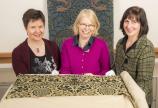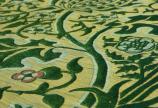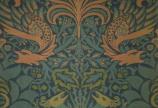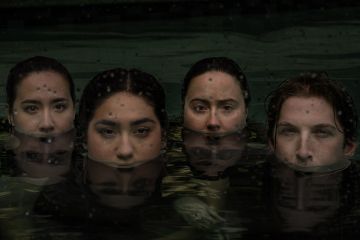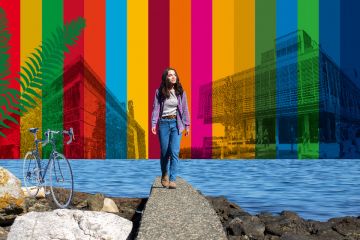Rotating and protecting UVic’s art collection
- John Threlfall
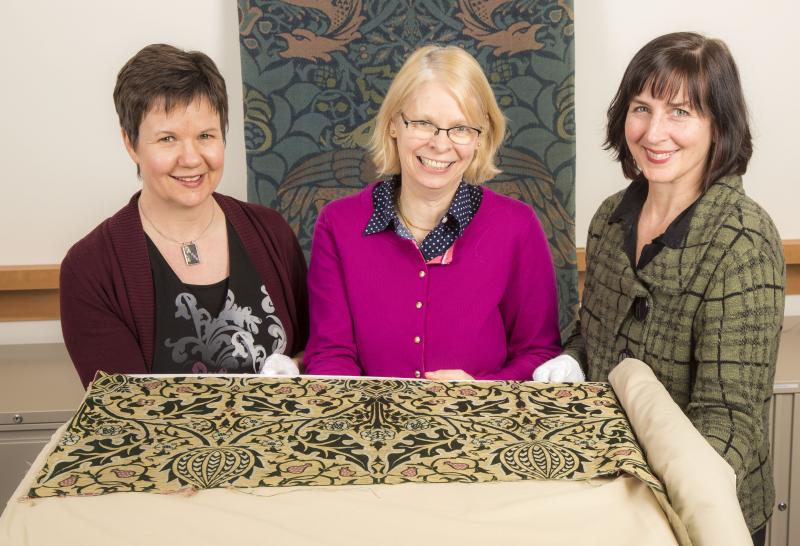
With 2,200 works of art currently on display—out of more than 20,000 pieces in the university’s overall art collection—UVic has more art on view in public, non-museum spaces than at any other university in Canada. Managing the collection responsibly through the Legacy Art Galleries’ Art on Campus program has also meant that a number of pieces previously on display in public spaces have been deemed to be at risk—and are in the process of being replaced with thematically similar works.
“The Department of Canadian Heritage designate some of our works to be of outstanding national significance,” explains Legacy Art Galleries director Mary Jo Hughes, “so they require we only show and store these pieces in places with ‘Category A’ museum standards—which we unfortunately don’t have in the public spaces and offices on campus.”
The risks that Legacy must be concerned about are more than just the possibility of theft.. “Art can be damaged from light, temperature, humidity, airborne contaminants, pests and vandalism,” she says.
Canadian Heritage requires nearly 1,000 nationally significant artworks in UVic’s collection to be protected for the benefit and education of both present and future generations. Consider, for example, Legacy’s precious William Morris tapestries. “They are so valuable and so vulnerable to light that we only bring them out for short-term display, and for examination and research,” says Hughes. “We always have to balance preservation with the desire for long-term display; if we were to put them out, they would be so faded after a couple of years that they ‘d be worthless for future generations.”
But while this curatorial shuffle means you’ll no longer find Myfanwy Pavelic’s paintings in the McPherson Library or Robert Davidson’s prints in the Fraser Building, you will now find equally strong and relevant pieces in their place. Pavelic’s portrait of famed conductor Yehudi Menuhin that previously hung outside the library’s Music and Media department has been replaced with alumna Eva Campbell’s portrait of filmmaker Kemi Craig. “Legacy is attempting to match pieces that will continue to speak those messages,” explains Hughes. “Maintaining First Nations prints in the Law faculty, for example, speaks to their respect for and interest in indigenous approaches to law.”
Even though Legacy Art Gallery Downtown and the Legacy Maltwood in the Mearns Centre for Learning are the only “Category A” spaces available, that doesn’t mean the campus will be short on art to display. “We have the most art on public display of any university in Canada,” Hughes says. (By way of comparison, the much larger University of Toronto campus only has 800 pieces on view.) “The Art on Campus program makes a valuable contribution to the educational environment at UVic. It reinforces an interdisciplinary approach in how people work, teach and learnon campus, and recognizes art as a vital part of everybody’s life; it provides invigoration and stimulation wherever it is.”
Hughes also points out what our art collection says about the university as a whole. “It reinforces key messages about UVic, about our values, about our culture,” she says. “Think about the remarkable amount of First Nations art we have campus: that speaks to our connection with the Coast Salish people, with being grateful for being on their territory, with recognizing their culture as a vital part of our world right now. That’s very important to UVic, across disciplines. We don’t want to just pigeonhole art in the Fine Arts or Visual Arts buildings.”
Though some key works have been moved out of offices where they were well-loved, protecting the art will create opportunities to share the pieces with a wider audience through the gallery—in our own era and in the decades to come.
The program is also providing new opportunities for community engagement, as seen in Legacy’s upcoming exhibit Epiphany:Highlights from the Legacy Permanent Collection opening May 1. Featuring artists of national significance like Norval Morrisseau, Lawren Harris, Frederick Varley, Robert Davidson, Emily Carr, Myfanwy Pavelic, Robert Rauschenberg, Jack Shadbolt and Jean-Paul Riopelle, among others, Epiphany will showcase art that may previously have had limited exposure. “This will enable a lot of people to see some of the cultural properties that have been taken off-campus,” she explains. “A piece may have been hanging in someone’s office or a hallway the general public couldn’t get to before. We’re trying to give access to these key pieces in exhibitions like this.”
“We’re still dedicated to providing access to all our pieces,” Hughes concludes, “through temporary exhibits, research, classroom visits, and through our database. We have to balance the protection of the artwork with access for scholarship, research and exhibition purposes.”
Photos
In this story
Keywords: arts
People: Mary Jo Hughes

